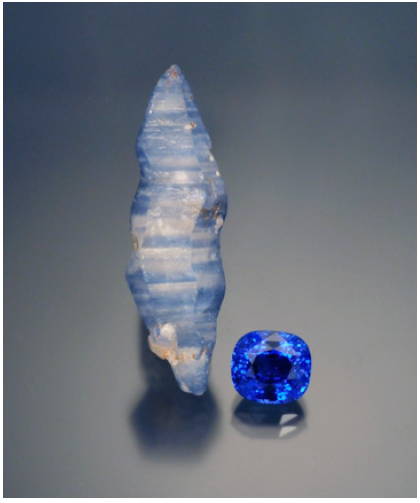Colors: All colors except red, pinkish red and purplish red
Durability: Tough
Refractive index: 1.76-1.78
Treatment: Assume heating, rarely surface diffusion
Hardness: 9
Availability: Up to ten carats
Localities: Myanmar, Thailand, Australia, Sri Lanka, Montana, Tanzania, Madagascar
Sapphire, unqualified, usually refers to blue sapphires from pale to dark blue.
Sapphire also includes all the other colors of corundum except red.
Colors other than blue are called “fancy sapphires.”
The finest color of sapphire, regardless of origin, is an intense medium-dark blue without green or violet overtones.
Did we say intense?
We are talking about a color that appears to be electric, not just pleasing but a pure, exciting blue.
The best examples of sapphire are found in Kashmir in the Himalayas at an elevation of about 15, 000 feet.
Kashmir sapphires are distinguished by slight sleepiness or velvety appearance caused by characteristic minute inclusions.
These sapphires have been mined for centuries, but not in any organized manner.
There has never been a plentiful supply, so there is very little quantity on the market.
Most people, even most jewelers won’t even see one in their life.
The sheer beauty and softness of the color speaks for itself… and their value as well!
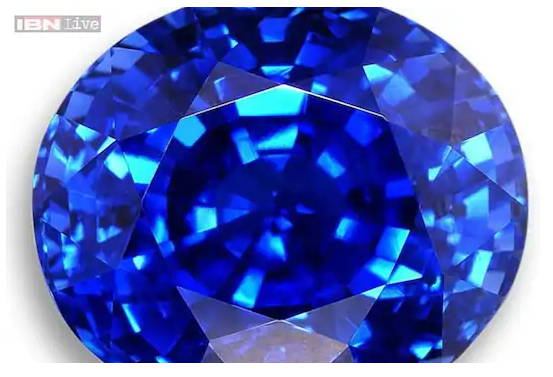
According to news18.com, this 27.54 carat ultra-rare Kashmir sapphire was sold for 6 million USD!
Image courtesy: news18.com
Burma also produces fine sapphires that will fetch top prices in the best qualities.
Burmese sapphires can be found in a pure electric blue color.
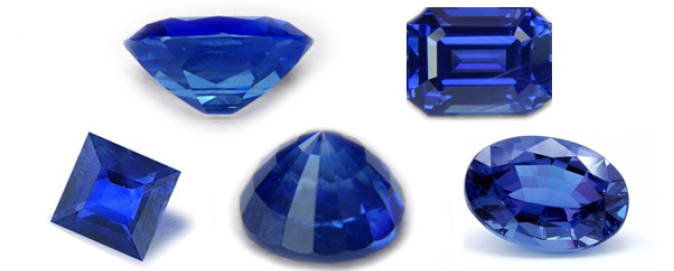
If unheated, they may have tiny rutile needles similar to those found in Burma rubies that indicate Burma origin.
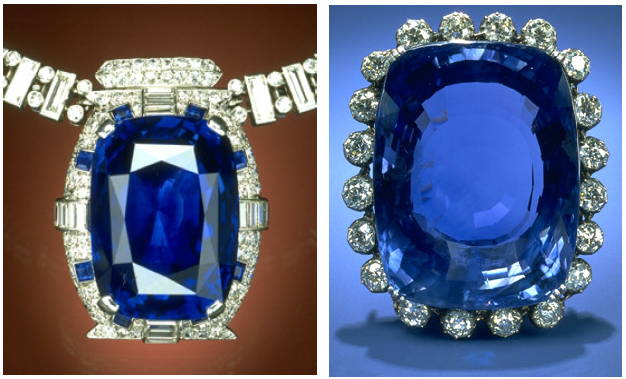
Most of the exceptional sapphires available today are mined in Sri Lanka, where there is a fairly consistent supply.
Although each source produces a variety of qualities, fine Sri Lankan sapphires often have a fine pure blue color and are reasonably clean, most Sri Lankan sapphires stone is heated to clarify them.
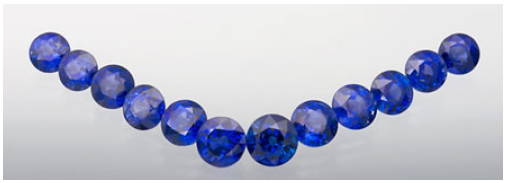
Australia produces the largest quantity of sapphires; some fine specimens are mined, but most of them have visible overtones of green or too dark.
Thailand mines sapphires that are quite blue; they also tend to be on the dark side.
In Cambodia, “Pailin” sapphires are mined when there is not political upheaval in the country.
These can be very fine blue although sometimes a little dark.

Many sapphires are color zoned; concentric hexagonal bands typify Australian stones.
If this detracts from the beauty of the stone, the value goes down. Sri Lankan sapphires sometimes have a small spot of intense blue color in an otherwise colorless crystal.
Expert Sri Lankan cutters can cut these, so the stone faces up a marvelous blue color; these are referred to as “bluff stones.” If a bluff stone is mounted, it may be impossible to see the zoning.
A bluff stone should be priced much lower than one of similar color that has an even overall color.
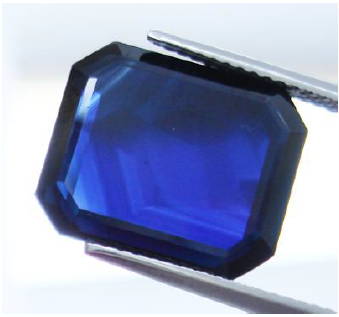
The pricing of sapphires is very complex.
The purity and intensity of the blue color is the first consideration; secondary colors of green or violet or overtones that make the stone appear grayish will lower its value.
Lightness or darkness is a factor; as the stone varies from a medium-dark blue to either light blue or dark blue, the value falls.
Good clarity is essential to the value, although microscopic inclusions will not detract.
Cutting must be a consideration to create the beauty of the stone.
Avoid excessively deep stones because they are hard to set.
Deep stones should cost less per carat since they are heavier than they should be.

A variety of sizes are available in sapphires.
Small sapphires are readily available and fall in the low to moderate price classification.
All shapes are available. In larger sapphires, all qualities are possible; but very fine stones are rare and fall in the very expensive range.
Most fine sapphires will be cut into oval or cushion cuts.
All the other colors of sapphires-violet, orange, green, yellow, brown and black and all colors in between-fall into the “fancy sapphire” category.
All prices and qualities are possible in fancy sapphires.

The most expensive of the fancy sapphire is the padparadscha, which is derived from the Sinhalese word for “lotus blossom.”
The original padparadscha is a delicate orange-pink color that is principally mined in Sri Lanka.
Today the term is used to describe all pink-orange to red-orange and orange sapphires.

Top-quality padparadscha sapphires are truly rare and command a very high price per carat.
Top stones have a very intense orange-pink color.
Prices drop as the stones become paler.
Clarity and cutting will be a factor in value, but they are secondary to the color.
Violet sapphires can be beautiful gems.
Since they do not fall in the ruby or blue sapphire category, they are much lower in price.
They are one of the bargains in the sapphire market.
Most violet-hued sapphires will show some color change when viewed under daylight and incandescent light.
If you are looking at violet sapphires, it is essential to look at it under different lighting conditions.
Most violet sapphires will fall into the moderate price category, although an exceptional stone may be expensive.

Yellow and gold color sapphires are readily available.
These are mined in Australia, Thailand, Sri Lanka, and Tanzania.
Yellow sapphires are available in a variety of sizes.
Colors range from pale yellow through an intense golden yellow to an amber color.
Many yellow stones were heated from Sri Lankan “Geuda” material; these stones are colorless when mined and turn yellow or blue when heated.
Prices on yellow stones will vary from moderate to expensive depending on the saturation of color, size, clarity, and cutting.
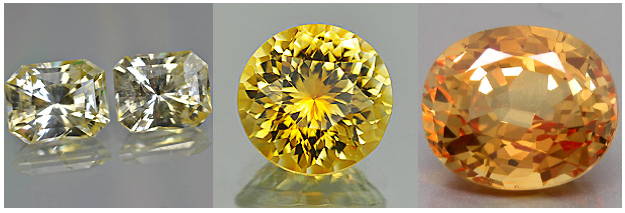
Green sapphires are abundant from Australia and Thailand.
The green color is usually a dull green resembling an Army uniform green, almost a jungle camouflage color.
If this has not created an exciting image, remember beauty is in the eye of the beholder.
Most green sapphires will fall into the low to moderate price range; supply is adequate to meet demand.
Occasionally there are some more interesting and attractive shades of green sapphire, and each becomes an individual case to consider for valuation.
An exceptionally pretty stone could fall into the expensive category.

All colors are possible in sapphire; sapphires mined in the Umba Valley in Tanzania come in the most exotic colors, and those going mix of yellow, green and/or blue are called “parti” sapphires.
The values of these will depend on the intensity of color, size, clarity, and cutting. In general, they will run from moderate to very expensive per carat price.

Star sapphires have six-rayed stars; this optical phenomenon is called asterism.
It occurs when there is sufficient rutile (tiny needle of titanium) in the stone.
The rutile reflects light into a six-rayed star.
On a natural star sapphire, you will need a pinpoint light source to observe the star.
Synthetic star sapphires exhibit their stars under any lighting condition: some almost look like the star was painted on.
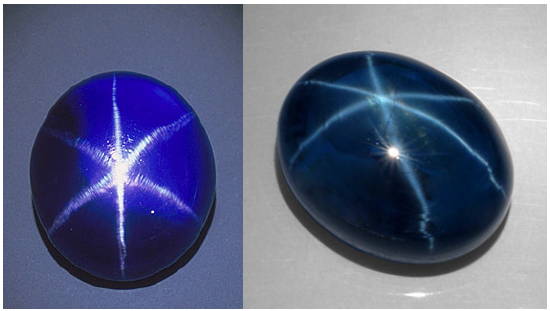
Star sapphires occur in a variety of colors.
The most common star sapphire is a black star sapphire; these are opaque in body color and can exhibit a well-defined star.
Most of these are small and are low in price.
Larger black stars, if fine in quality, might be moderately priced.
Blue, gray, pink star sapphires and star rubies can also be found.
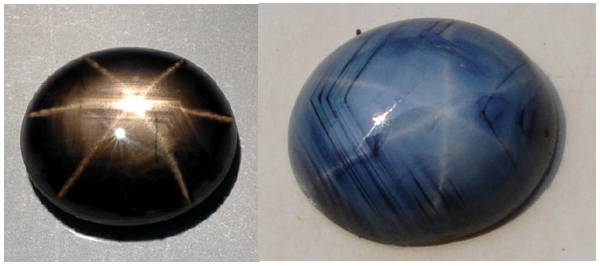
Star sapphires occur in a variety of colors.
The most common star sapphire is a black star sapphire; these are opaque in body color and can exhibit a well-defined star.
Most of these are small and are low in price.
Larger black stars, if fine in quality, might be moderately priced.
Blue, gray, pink star sapphires and star rubies can also be found.
